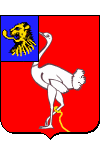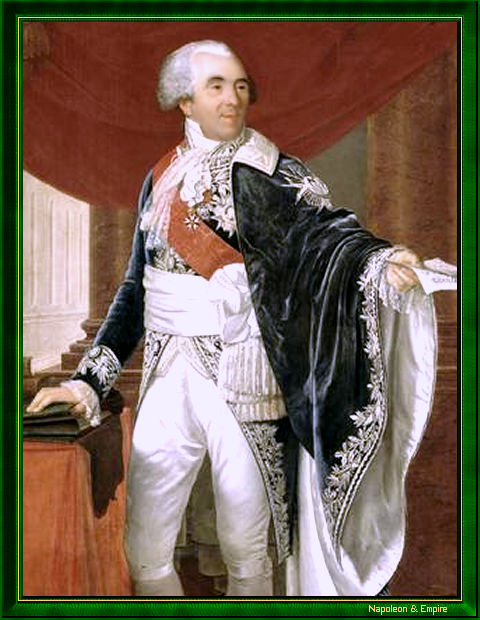Jean Girard Lacuée
Count of Cessac
Pronunciation:

Jean Girard Lacuée was born on November 4, 1752 at the Castle of Lamassas , in the commune of Hautefage (in today's Lot-et-Garonne département), to a father who was a lieutenant in the Agen maréchaussée.
Towards the end of the Ancien Régime, two works earned Lacuée, a modest captain confined to his role as instructor of the cadets gentilshommes de Metz, a reputation as a military theorist. The first was Guide de l'officier en campagne, published in 1786; the second, the volume of the Encyclopédie devoted to military art, of which he was editor.
At the same time, from 1784 onwards, he set out in a series of memoirs the reforms he considered necessary to the ancient organization of the royal army.
These various works earned him a place on the commission of military technicians set up by the Constituante. Lacuée found the opportunity to put his ideas into practice.
In 1791, he was appointed Procurator General of the Lot-et-Garonne department (a sort of prefect, but elected by his constituents), and sent by his department to sit on the Legislative Assembly. A member of the military committee, he distinguished himself by his attacks on Charles-François Dumouriez, whom he was the first to expose.
After acting as interim Minister of War from September 3 to 6, 1792, he was put in charge of defending the Spanish border and left for the army of the Western Pyrenees. The following year, he was appointed general, but was dismissed in June 1793 for his sympathies with the Girondins.
He was again elected deputy for Lot-et-Garonne in 1795, and took his seat on the Conseil des Anciens. In Vendémiaire year IV, his refusal to take command of the troops intended to crush the insurrection of the royalist sections of Paris left the field open to Napoleon Bonaparte.
Under the Consulate, he joined the Conseil d'État on 4 Nivôse, An VIII, where he was appointed President of the War Section. He also served twice as interim Minister of War, from May 6 to 22, 1800, then from October 8 to November 13. Napoleon I, who resented his independence and criticism, showed him a great deal of respect and treated him with favor - Governor of the École Polytechnique in 1804, Major General in 1805, Director of Reviews and Conscription in 1806, Count de Cessac in 1808, Grand Eagle of the Legion of Honor in 1809 - but kept him out of the top jobs for a long time. Finally, in 1810, he was entrusted with the Ministry of War Administration, a post Lacuée held until November 1813, and in which he demonstrated his strict probity.
In 1814, Lacuée accompanied Marie-Louise to Blois, then, after the abdication, rallied to the Bourbons, to whom he remained loyal during the Hundred Days. Appointed Inspector General of the Infantry by King Louis XVIII, he retired in 1815.
Louis-Philippe I made him a peer de France in 1831.
He died on June 14, 1841, dean of the Académie française, where he had sat since 1803. He is buried in the Montparnasse cemetery (4th division) .
"Jean Girard Lacuée de Cessac" by Henri-François Riesener (Paris 1767 - Paris 1828).

Lacuée's name is inscribed on the 18th column (east pillar) of the Arc de Triomphe de l'Etoile.